New Burberry book tells the story of the famous Yorkshire-made trench coat and the Burberry check
When Marilyn Monroe caught the scent of another woman on her Burberry trench coat at the home she shared with Arthur Miller, she threw it away in rage (fortunately, it was retrieved by her masseur).
When Audrey Hepburn roamed the streets of Paris, she did so in a Burberry. Catherine Deneuve wore one in The Umbrellas of Cherbourg (1967); Dustin Hoffman and Meryl Streep wore matching Burberry trenches in Kramer vs Kramer (1979), and Warren Beatty sported one as Dick Tracy (1990). The Burberry trench is arguably as famous as its celebrity wearers, past and present.
Advertisement
Hide AdAdvertisement
Hide AdToday’s Burberry star wearers and champions include Beyoncé, footballer Marcus Rashford, Adele, Billish Eilish and, of course, Kate Moss, who says: “The Burberry trench is a quintessentially British piece that never dates.”
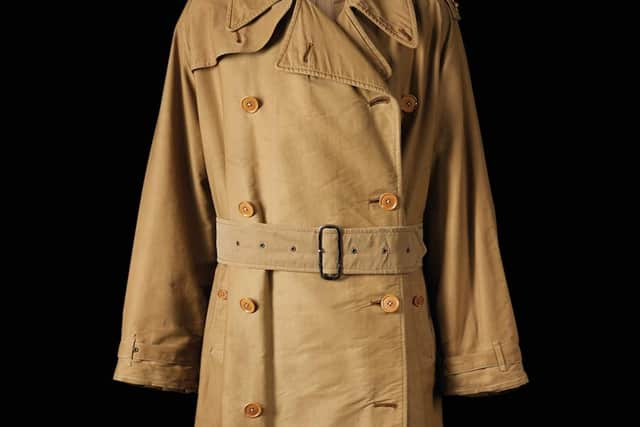

The stories of the trench coat, the check pattern and other iconic Burberry designs have been captured for a new book that explores and celebrates the brand’s history, innovations, adventures and achievements.
Called simply Burberry, it has been written by Alexander Fury and published by Assouline. It is a huge and glorious coffee table tome, beautifully bound in Burberry check, with an outer jacket featuring a detail of - what else - a Burberry trench coat.
Inside, there are five chapters with 200 illustrations and fascinating material from the Burberry archive, charting the evolution from a small business into a global luxury brand, founded in Basingstoke in 1856 by 21-year-old Thomas Burberry, a farmer’s son who coupled his love of the outdoors with an entrepreneurial spirit to create hard-wearing, practical, weather-proof clothing for those who needed it, from landworkers to adventurers.
Advertisement
Hide AdAdvertisement
Hide AdCarly Eck, brand curator of the Burberry archive, says: “This book, the only one to be endorsed by the brand in recent times, presents a panorama of the company’s extraordinary heritage, which deserves to be widely celebrated. It’s the stuff of legends.”
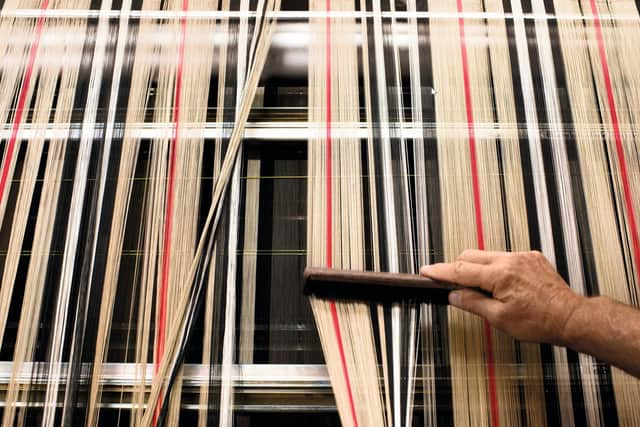

“Burberry was never founded as a fashion company,” says Christopher Bailey, the brand’s Halifax-born creative director from 2001 to 2018. “It was about something that was practical, something that functioned. Highly designed.”
Wanting to make a cloth that was lightweight, weather-resistant and breathable, Thomas Burberry invented gabardine in 1879 and patented it in 1888. The company began outfitting the British army and, in the First World War, the trench coat was born. In 1917, the Trench Warm design was advertised as “made in the Burberry material chosen by Sir Ernest Shackleton”.
The trench coat was adopted quickly by women, too, and reflected the same new fashion revolution that saw Coco Chanel use fisherman’s jersey fabric to create dresses with movement, saying: “Clothing must be logical.” Indeed, Thomas Burberry himself declared: "Inherent in every Burberry garment is FREEDOM.”
Advertisement
Hide AdAdvertisement
Hide AdThe Burberry trench has been reinterpreted many, many times since its beginning, constantly evolving in shape and form, and reimagined, recontextualised and reworked in the 21st century under Christopher Bailey and Riccardo Tisci, whose AW22 collection saw it transformed into an evening gown.
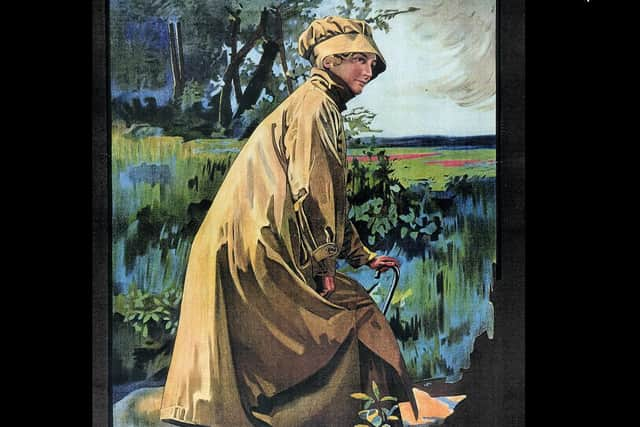

The book features photographs of trench coats being made in the present day in West Yorkshire. The gabardine is woven in Keighley at the company’s own textile mill, while the Castleford factory, owned by Burberry since 1972, is where the trench coats have been made since the late 1960s.
“Burberry has a long history of manufacturing the highest-quality garments, and Castleford proudly maintains that tradition,” says Paul Brown, an industrialisation process manager at Castleford, who has worked for Burberry for more than 45 years.
The book notes: “Generations of families within Castleford have worked at Burberry – family lines running deep through the factory. The Browns are a perfect example: Paul, two of his brothers and his wife have all worked for Burberry.”
Advertisement
Hide AdAdvertisement
Hide AdIt describes the complex process of creating a trench coat, combining traditional and technologically advanced manufacturing, with computer-aided design turning design sketches into 3-D designs, yet every inch of gabardine inspected by humans.
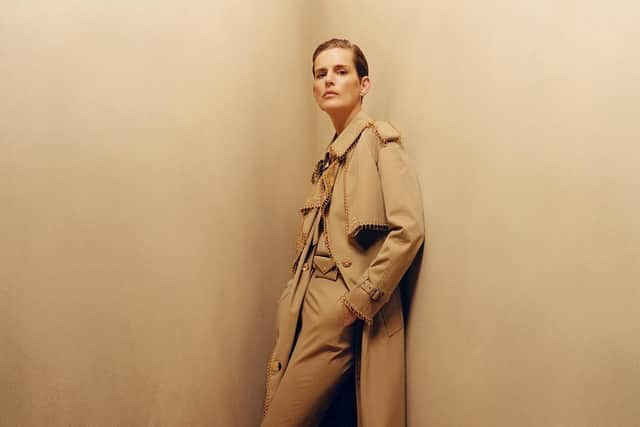

“We use many of the same techniques now as we did when the factory was first opened,” says Brown, adding that skills can take up to twelve months to perfect.
In 2020, Burberry retooled manufacturing in Castleford to make much needed PPE for the NHS, and the company contributed 160,000 pieces, just one of the many ways in which the company continues Thomas Burberry’s legacy of community-mindedness.
The Burberry Check has also been explored and reinterpreted many times over the years. In the 1920s, check linings were introduced in a variety of different designs and shades, including one example in beige, checked with white, black and a rich scarlet. The book notes: “It wasn’t until the 1960s, however, that its particular popularity prompted customers to begin to ask, at the house’s Haymarket flagship, for the ‘Burberry Check’.”
Advertisement
Hide AdAdvertisement
Hide AdThe Burberry Check remains a staple, as do those tones - witness the highly coveted monogrammed ponchos of Bailey’s AW14 collection, led out on the catwalk by Cara Delevingne.
Bailey also sought inspiration for many of his designs from own Yorkshire heroes, with outfits inspired by Alan Bennett, David Hockney and the sculptures of Henry Moore. But Burberry, for him, was also about all sorts of people wearing the coats in their own way and in 2009, he was behind the creation of an online platform called Art of the Trench, featuring images of coat owners from around the world.
Now new creative director Daniel Lee, another Yorkshireman, from Bradford, is at the helm and there is a new focus on the extraordinary British heritage of this internationally coveted brand.
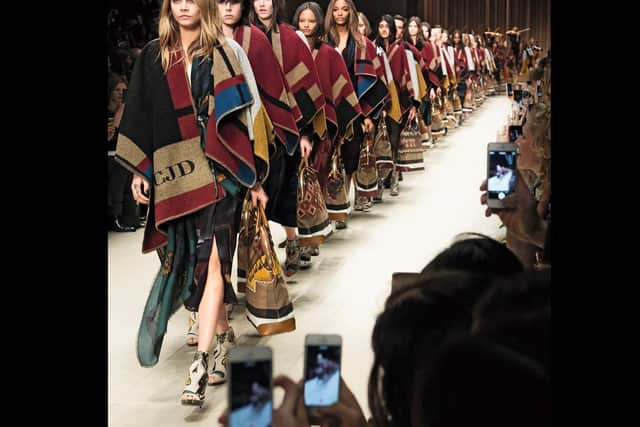

Bailey says: “There are very few things that are so identifiable, worldwide. It’s not fashion anymore, the Burberry trench. It’s an item – one that is so familiar and known, in the furthest-flung corners of the globe.
Advertisement
Hide AdAdvertisement
Hide Ad“There is only a handful of items that you can list that have that power. You see a coat and you know – you know it is a British, Burberry, trench.”
- Burberry is published by Assouline with text by Alexander Fury and a foreword by Carly Eck and costs £150 at assouline.com and at Burberry and Assouline stores.
